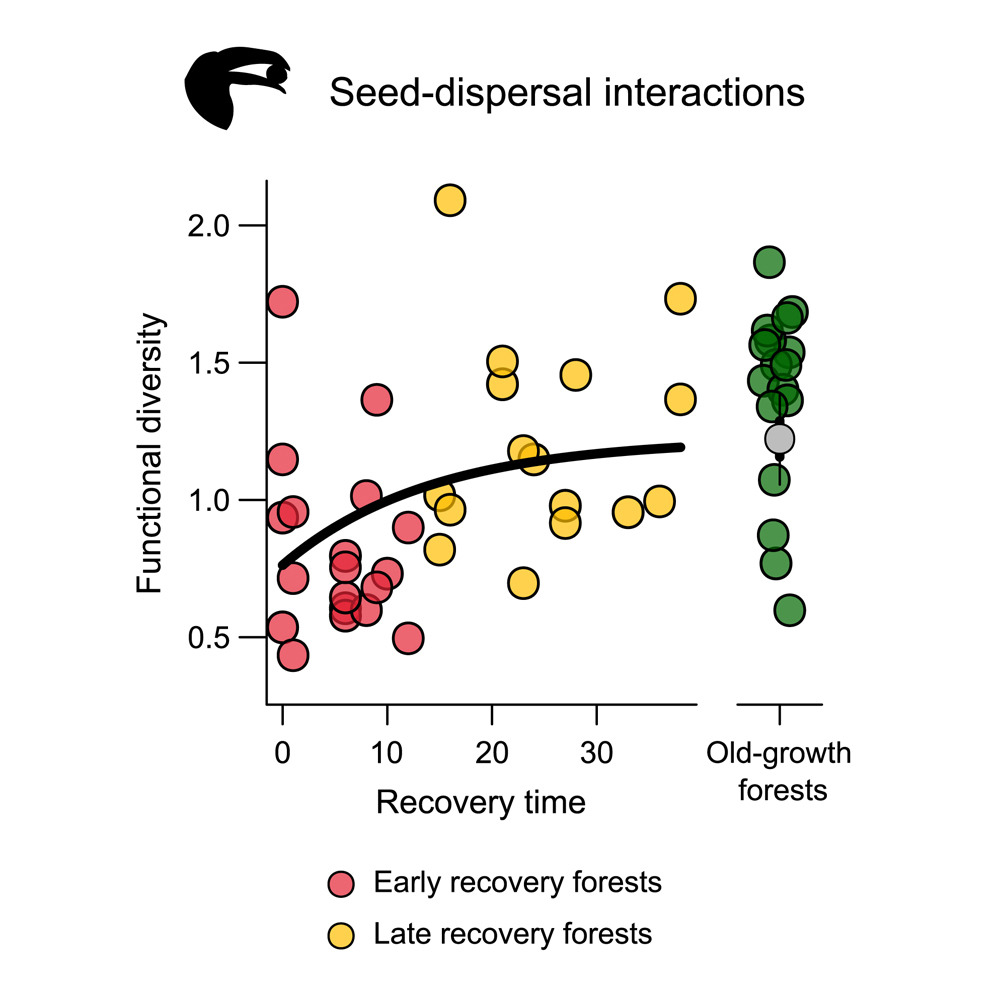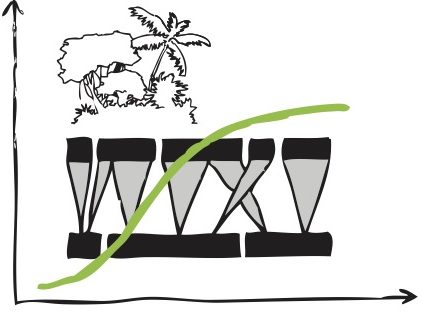Anna Landim and collaborators found that animal communities recover more slowly than plant communities, mainly because remnant trees help maintain plant functional diversity and attract animals early in the regeneration process. Their study estimated that animal functional diversity takes about 40 years to reach levels comparable to those of old-growth forests. Moreover, landscape connectivity plays a crucial role—forest patches that are well connected to old-growth areas recover seed-dispersal interactions much faster. However, large-bodied frugivores such as toucans and peccaries, which are vital for late-stage forest recovery, tend to return slowly, thereby limiting the full re-establishment of certain ecological interactions.
*Landim AR, Albrecht J, Brito J, Burneo S, Erazo S, Tinoco BA, Tschapka M, Neuschulz EL, Schleuning M (2025). Delayed recovery of seed-dispersal interactions after deforestation. Current Biology


